Case Study
Jungle Scout Home Dashboard
Jungle Scout is a SaaS BI tool for sellers on Amazon's Marketplace. The original Jungle Scout product catered to the small businesses and individual entrepreneurs. Jungle Scout was the first mover in this market giving them an early market lead, but that lead had dwindled.
The User and Business Problems Defined
The Business
In 2020/21 Jungle Scout's focus had been on expanding their reach by creating an enterprise-focused product.
While attention was on that effort competitors grew to offer challengers to Jungle Scout's original small business tools, notably focused on the user experience. Their efforts have been successful and have gained the important marketshare at Jungle Scout's expense.
The User
The user feedback that we collected pointed to a theme of user frustration that centred on the tools being complex and hard to use, especially for the new user category which is the majority of users. Specific feedback cited the steep learning curve, and the lack of connection between the various tools.
An example of the difficulty users faced was the login flow, which dropped users into one specific tool rather than a landing page regardless of what tool the user intended to use. The effect of this was to over-emphasize one tool while minimizing exposure to other tools that would be of benefit to the user.
Jungle Scout's post-login landing page
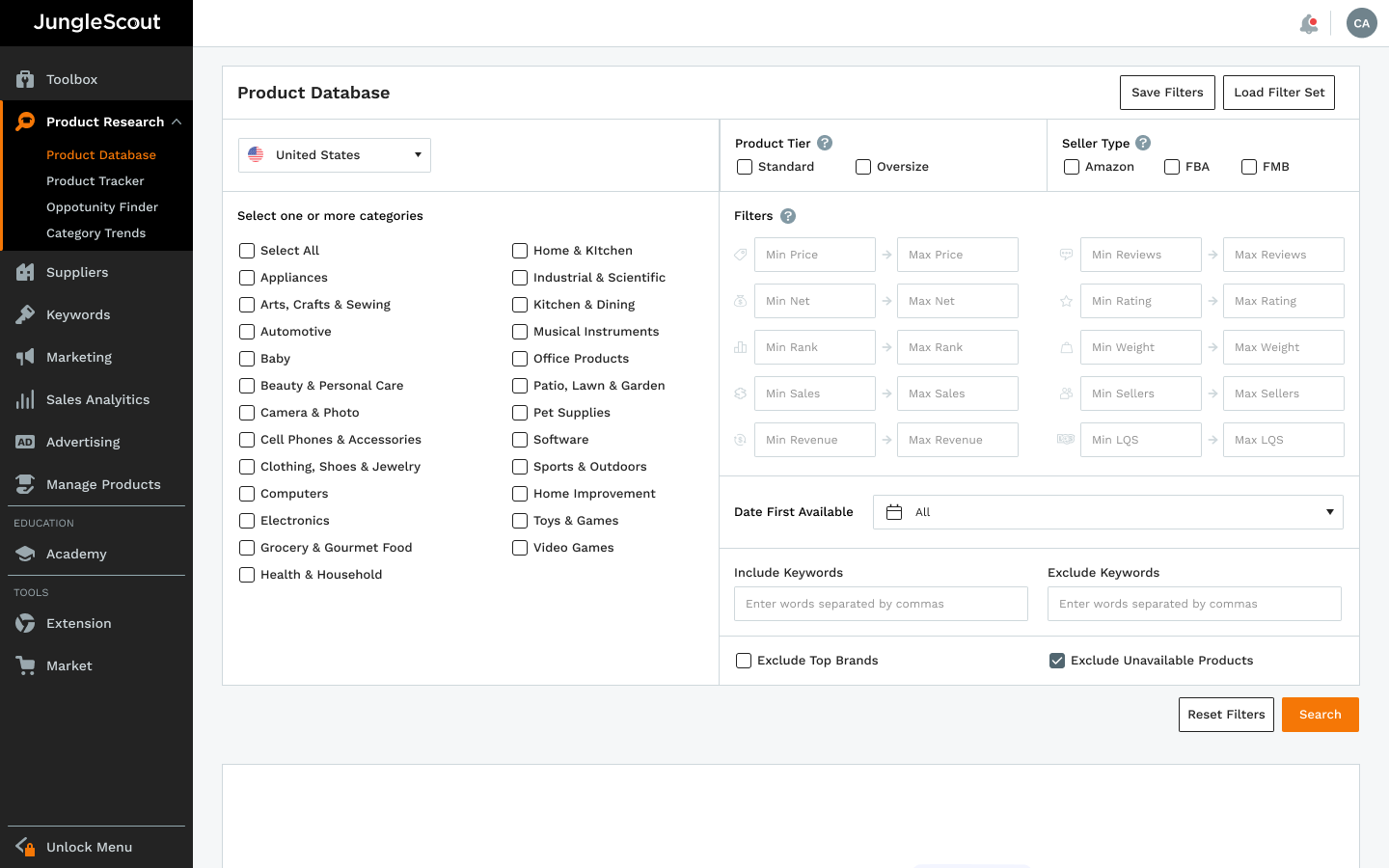
The competition's landing pages
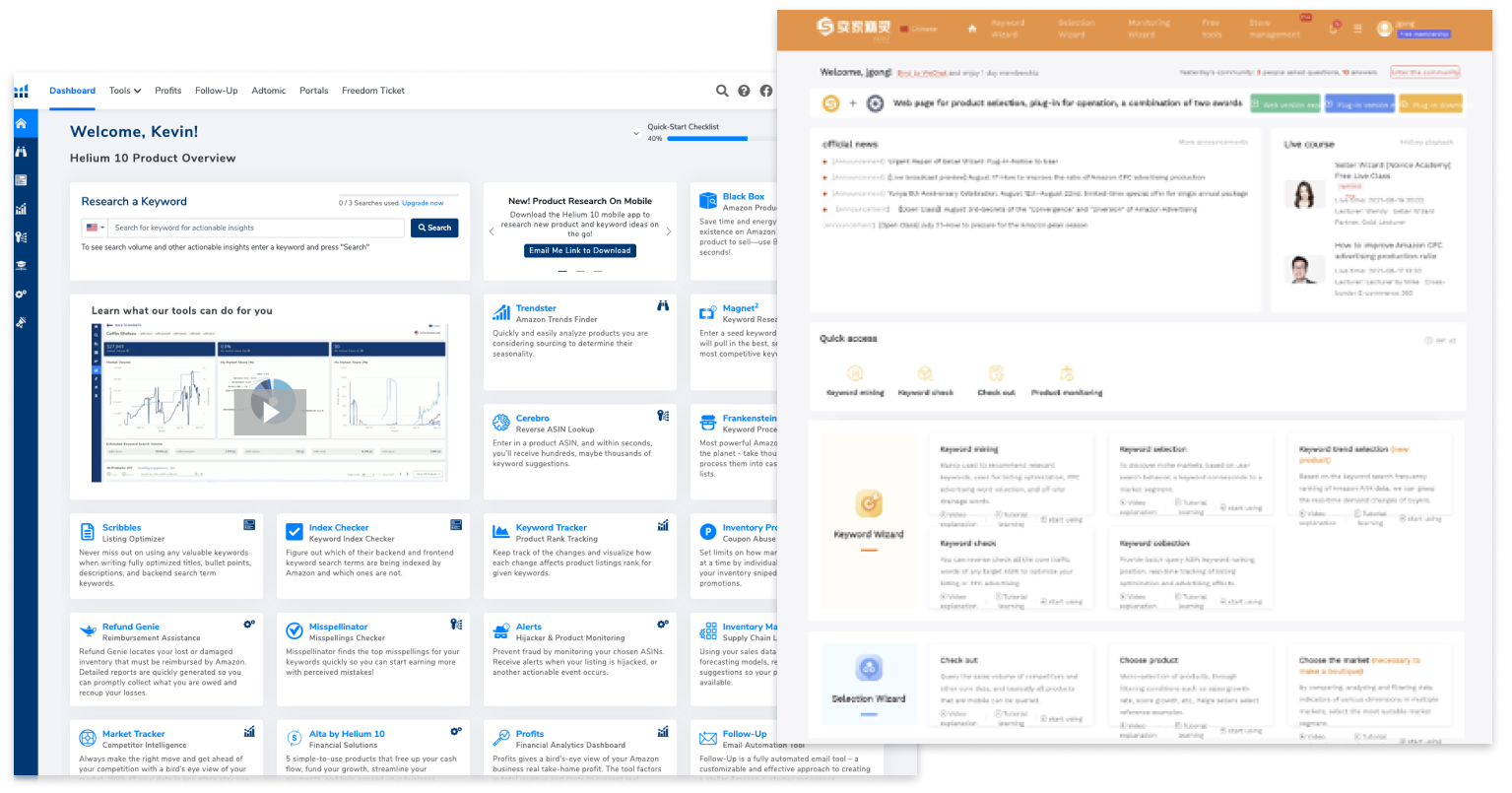
The Design Process
This was a UX driven project. It was large and initially undefined project, so to ensure that we stayed true to true user focus we followed a formal double diamond design planning model, beginning with
The design process began with a review of what we knew from our users and what we knew of our competition:
- existing user feedback collected over the previous quarters
- a review of previous abandoned projects conceptualizing a home page
- a heuristic review of competitors products
- a scan of online review sites (G2, Capterra, etc.) comparing our product against our competition
- review of existing previous user interviews and usability testing
- heuristic review of current workflows
We engaged stakeholders from across the company, from both the North American and China offices.
These stakeholders participated in brainstorming exercises to examine suggestions from our research, generate new ideas, and prioritize suggestions through a voting process. Many participants from our stakeholder group also happen to be sellers themselves and brought important insight to the discussion, which we welcomed and also handled carefully with the knowledge that their suggestions come from an expert user perspective, rather than the beginner-intermediate level of our target persona.
The collated user feedback that we collected pointed to a theme of user frustration that centred on the tools being complex and hard to use, especially for the ‘new user’ category which is the majority of users. Specific feedback cited the steep learning curve, and the lack of connection between the various tools.
The prime example of the difficulty users faced was the login flow, which dropped users right into a complex tool regardless of users’ needs or skills.
User feedback and regular consultation told us that users need a central landing page to orient themselves in the tools. In addition to a landing page we found that users wanted and would benefit from easier access to vital information, and access to support resources and training material, as this is a complex suite of apps.

The finished product is a new landing page for users that features
- a live-data dashboard,
- navigation to all tools, grouped by the “jobs to be done” model, and
- resources for training, support and information sharing
This leapfrogs the features of the landing pages offered by Jungle Scout’s best competitors.
As a bonus I also ensured that the page is responsive for mobile. This is for future-proofing: not all tools in the web app are responsive, but that will be on the product roadmap.
The design process began with a review of what we knew from our users and what we knew of our competition:
- existing user feedback collected over the previous quarters
- a review of previous abandoned projects conceptualizing a home page
- a review of competitors products
- a scan of online review sites (G2, Capterra, etc.) comparing our product against our competition
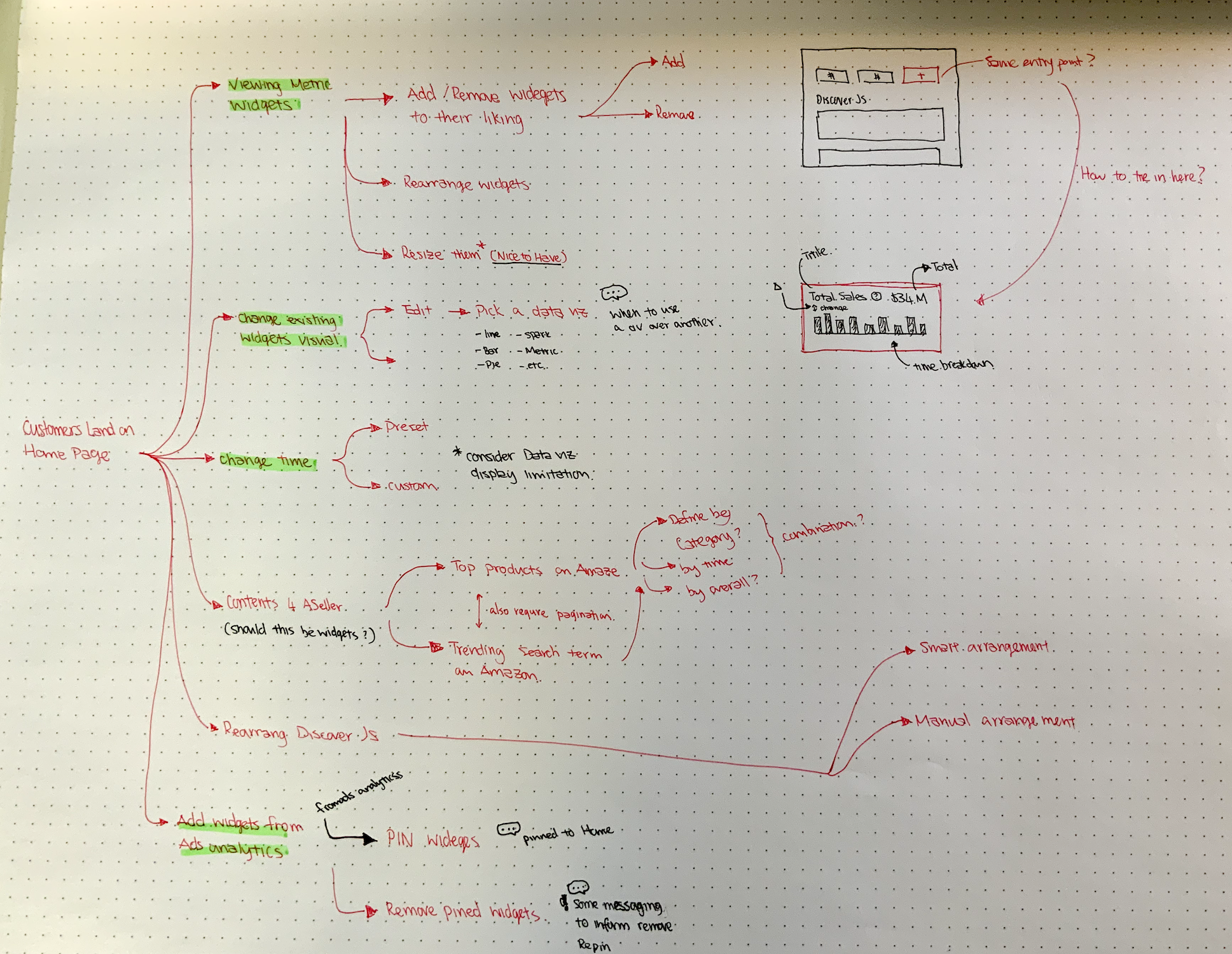
Challenges Overcome
This project came with several challenges that could had the potential to derail it:
- We kicked-off during a hiring cycle to build out the teams that would be taking on the small business tools portfolio. I was interviewing candidates for UX roles to build my team as well as product managers. Well into project planning the UX team, product management and engineering were all understaffed. I stepped in to start the design work myself, and then design works was assigned to freelance designers (to mixed results). I brought final design back in-house as soon as was practical.
- In addition to being my first project at Jungle Scout it was also the first for the product owners and engineers that were hired.
- The original delivery date was accellerated during the project, from Q1 2022 to Black Friday 2021, to satisfy a Marketing need for promotion, trimming 8 weeks off our project schedule. I lead a round of prioritization talks with leadership and stakeholders, making some hard calls scaling back some features and delaying others to a V2 release while maintaining the users’ needs as our top priority.
We successfully hit our delivery date for Black Friday, and our subsequent V2 release.
Results
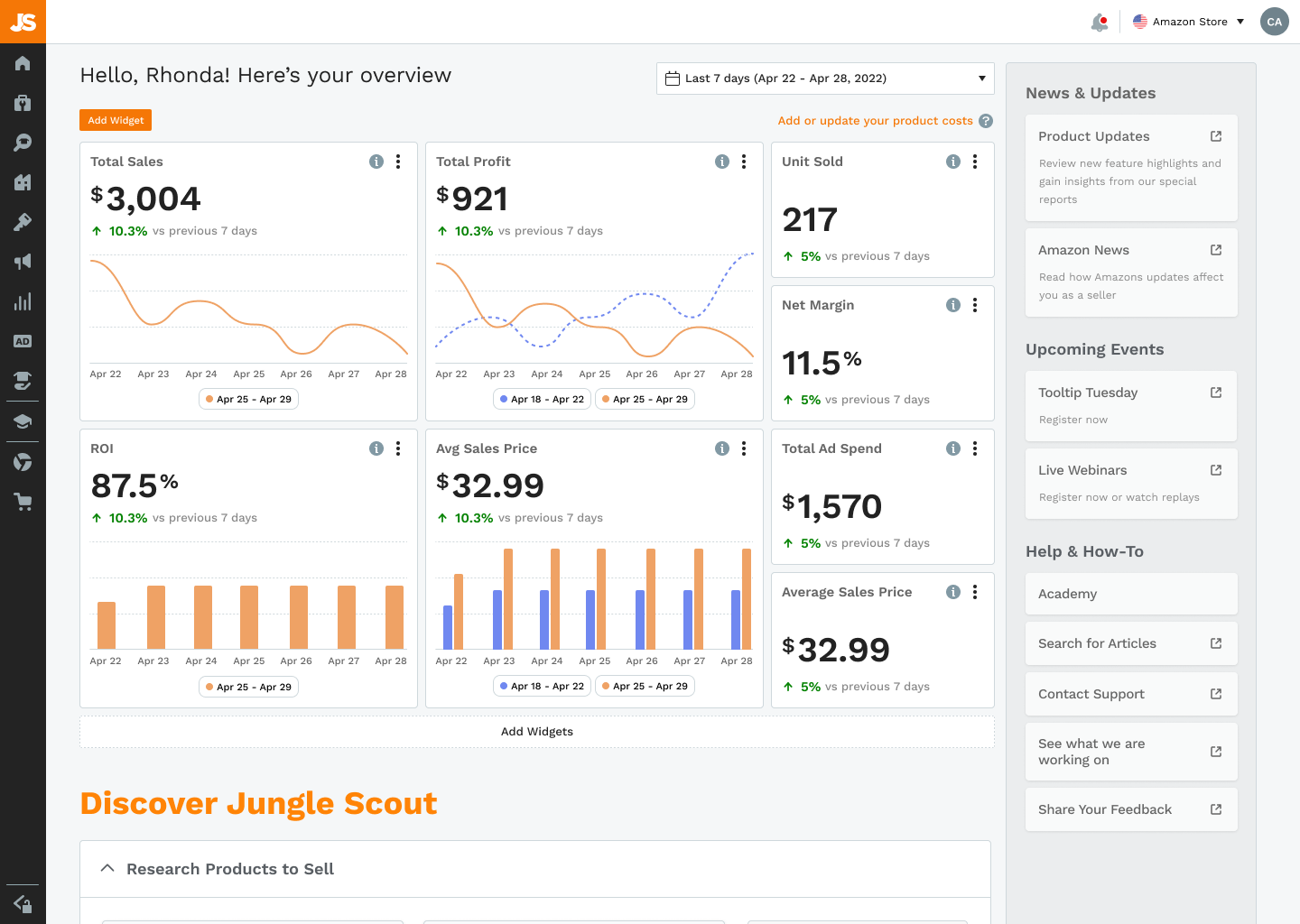
We launched the new dashbaord on the accelerated launch date, and even with the prioritization needed to meet the new date we delivered a product that met or beat our competitors in almost every feature that mattered:
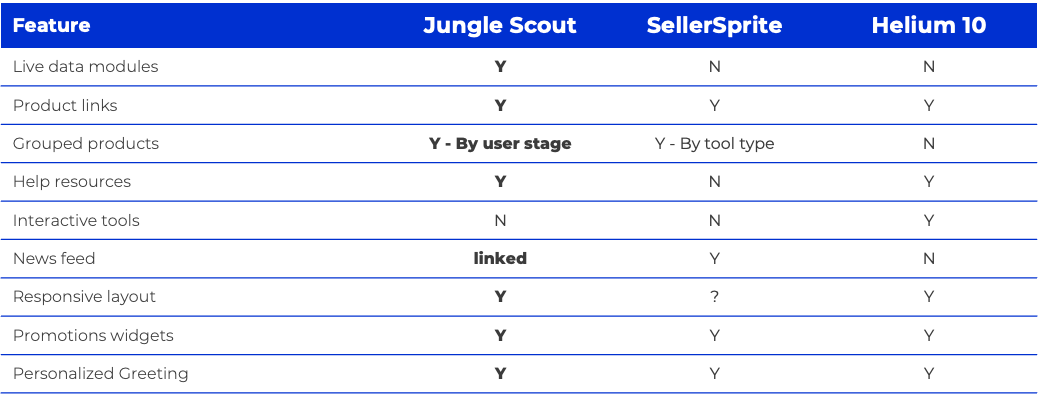
In addition:
- Subscriptions from Black Friday to year end increased 20+%
- USR scores increased by 15% to the end of 2021
- User interviews found strong approval of the update and appreciation for the enhanced functionality
- Usage rates for many features increased due to increased visibility afforded by the JTBD view
